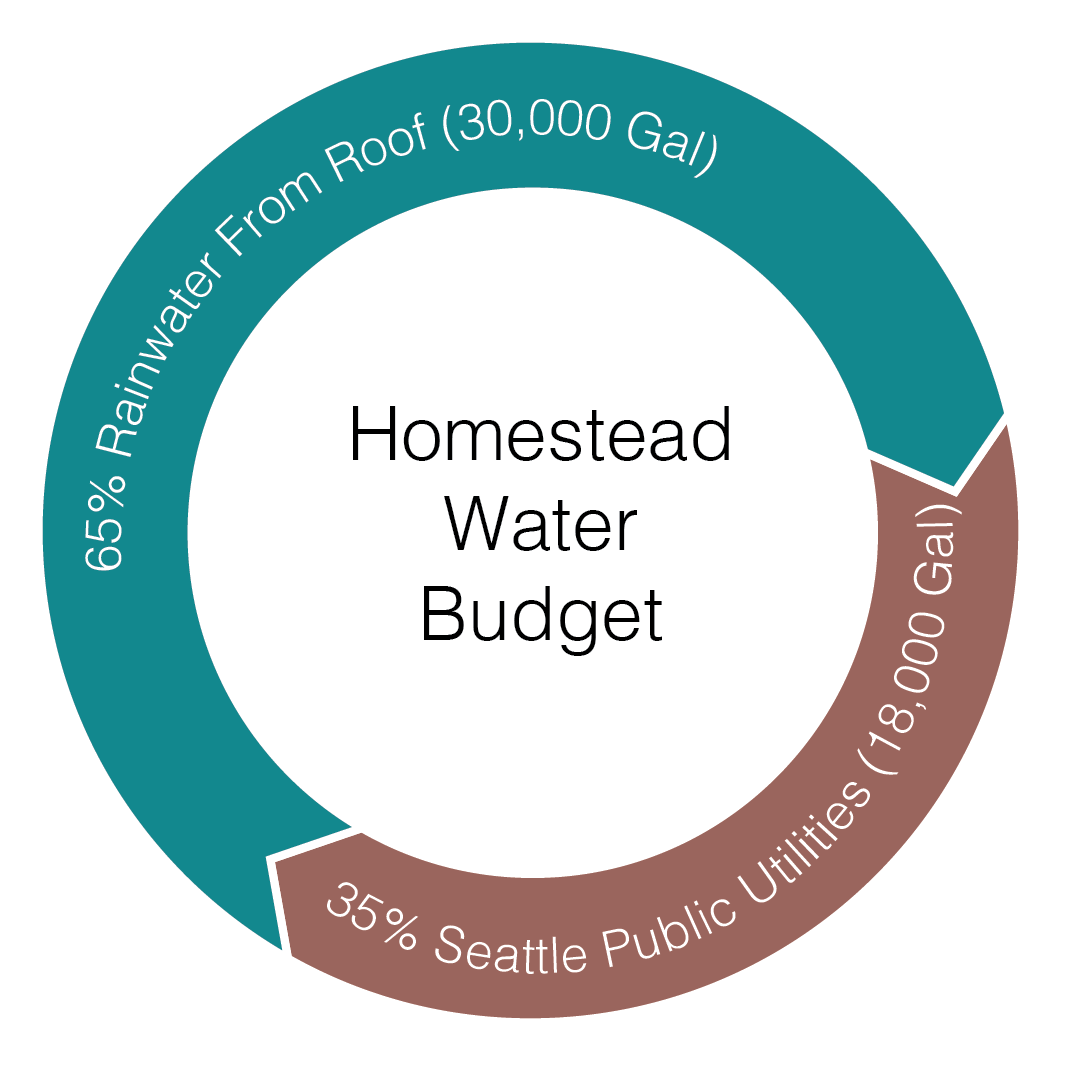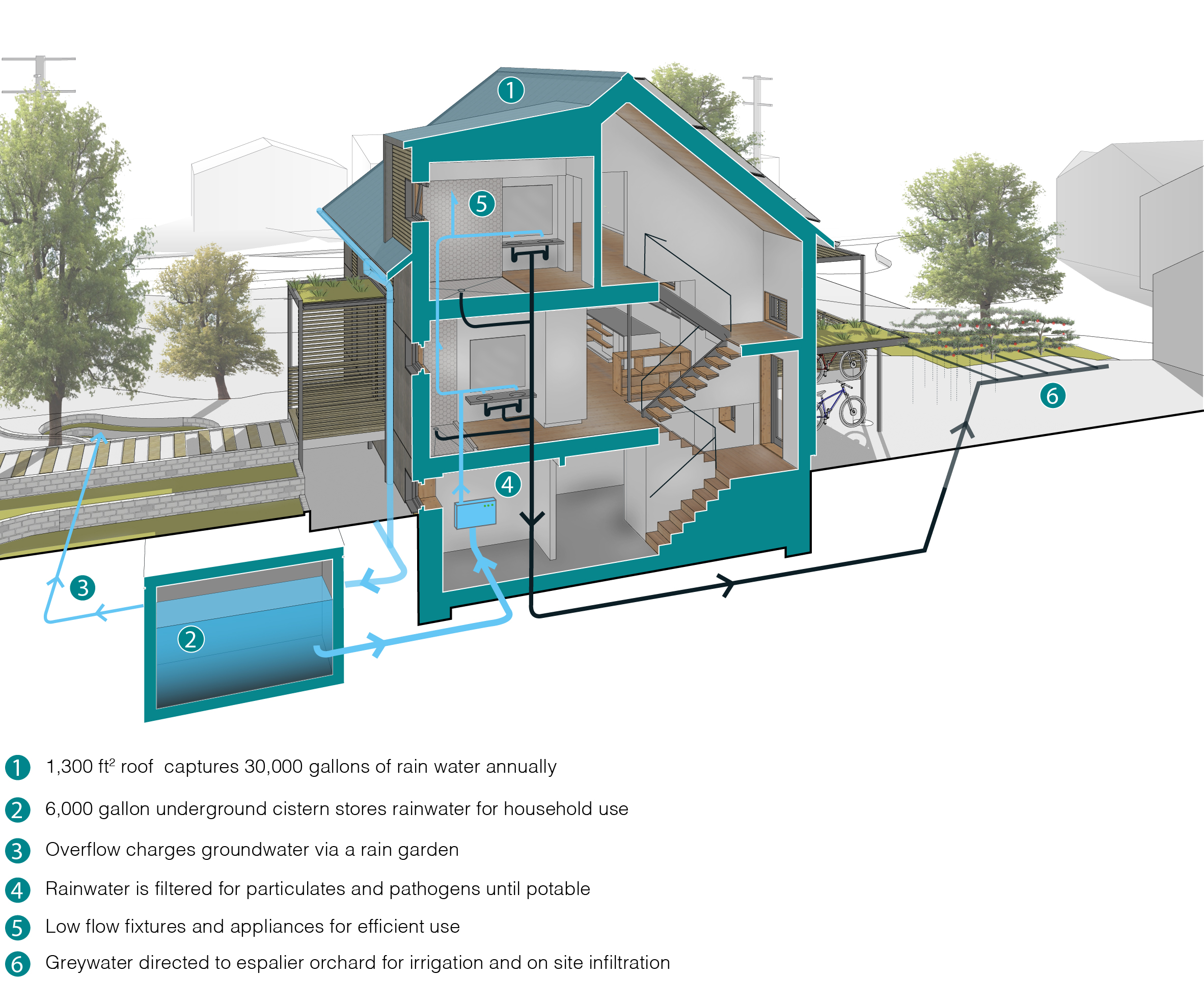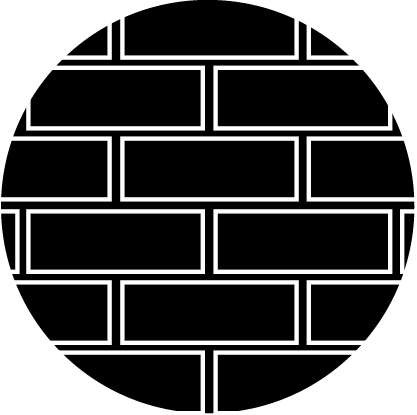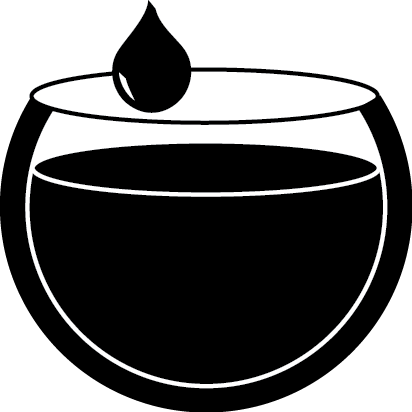

Rainwater Harvesting and Use
Considered one of the most demanding petals of the Living Building Challenge 3.0, project water use and release must work in harmony with the natural water flows of the site and its surroundings. To achieve full certification, 100% of the project’s water needs must be supplied by captured rainwater or other natural closed loop water systems, and/or by recycling used project water. This captured water must then be purified as needed without the use of chemicals. Additionally, all stormwater and water discharge, including grey and black water, must be treated onsite and managed either through reuse, a closed loop system, or infiltration.
A Water Balance
One of the driving forces behind Homestead Remade was to design a dwelling that was in scale and harmony with its neighborhood context. We believe strongly in producing a home of superior quality and craft that sets a limit to the size and scale of the overall structure. Our goal was to work within the existing footprint of the home on the lot so as to retain the character of the neighborhood. Unfortunately this sustainable goal of building smaller is in direct conflict with the necessary size of a roof structure that would be needed to capture enough rainwater to serve 100% of the project's needs per the petal imperative. When looking at blackwater and grey-water systems we must also be realistic and practical as to what goals can be undertook and ultimately achieved within this speculative project.
We accept that the certification of the water petal is not achievable with Homestead Remade, as we have still designed the home's water systems in the spirit of the LBC 3.0. A 6,000 gallon cistern will capture nearly 32,000 annual gallons of water from the roof. This water will be treated to potable standards to provide a modeled 60-70% of the building water needs. Low flow fixtures and efficient appliances will be installed in Homestead Remade, and the building occupants will be educated on their optimal functioning performances. Grey water from baths, showers and sinks will be infiltrated into the soil below the orchard. The root structures of the fruit trees and berry bushes will filter the water and take up additional nutrients as it evaporates and percolates back into the groundwater.








